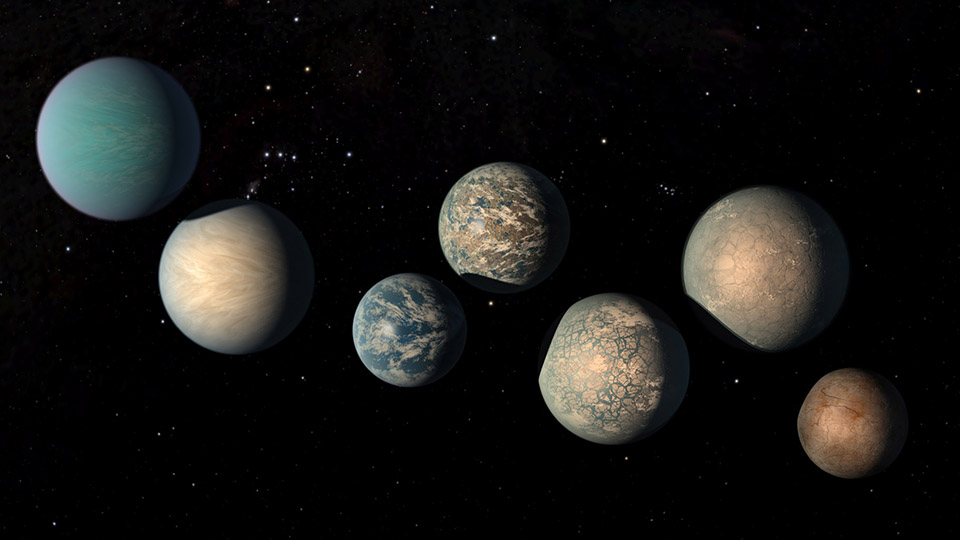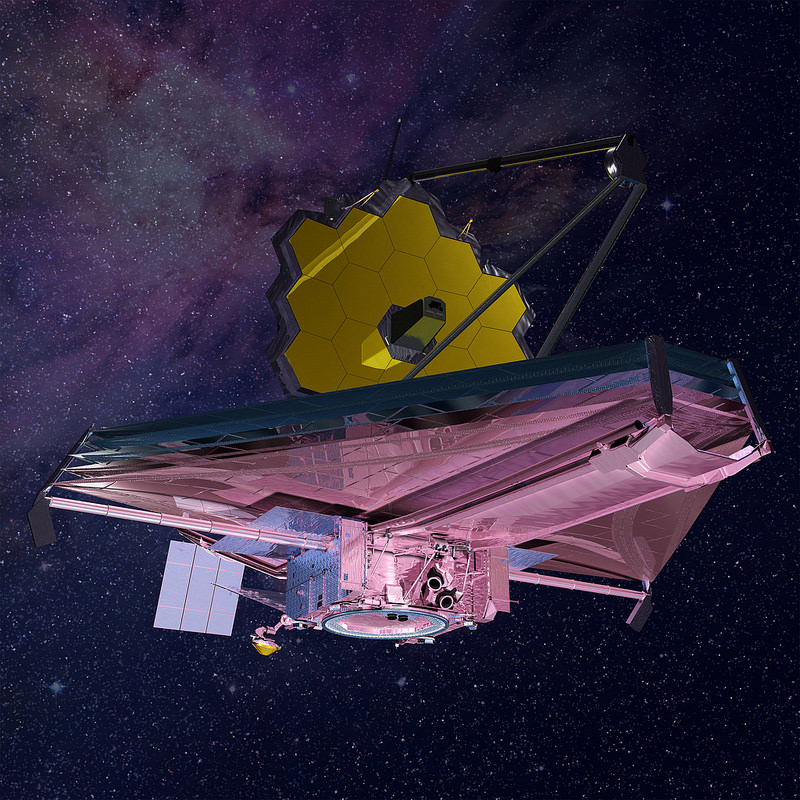AstroFan: A Planetary System Not So Far Away

Header Image Photo Credit: NASA/JPL-Caltech
It is only a few short weeks until my favorite holiday, May the 4th! A time for Star Wars fans to embrace the lore and celebrate the rich world created by George Lucas. In honor of this joyous occasion, I thought that it would be apropos for this AstroFan to explore a planetary system that is far (but not TOO far) away from us, TRAPPIST-1! Read on!
There are a plethora of reasons why I’m absolutely in love with the world that George Lucas created. The diverse range of alien species, the beautiful score written by John Williams, the deeply prolific lore—I could go on and on.
One of my favorite aspects of the Star Wars films are all of the amazing planets that the characters find themselves on. From the bustling city-planet of Coruscant to the roaming hills of Naboo to the desolate deserts of Tatooine, there is no shortage of make-believe worlds for a Star Wars fan to get lost in.
Which brings us to today’s topic, TRAPPIST-1! Just like Star Wars, this planetary system is filled with an awesome range of diverse planets, whose features could be described as being “stranger than fiction”.
Let’s dive in!
The TRAPPIST-1 system was recently discovered back in 2016 by the TRAnsiting Planets and PlanetesImals Small Telescope (a.k.a TRAPPIST). The system consists of seven EARTH-SIZED planets that all orbit a red dwarf star.
For those who don’t know, a red dwarf star is a small and relatively cool star that can be up to half the size of our Sun. The really cool thing about red dwarf stars is that not only are they the most common type of stars in our Universe but they also have the longest lifespan. We’re talking trillions of years! For comparison, the current age of our Universe is just 13.8 billion years. That’s right. In the entire history of the Universe, no red dwarf star has EVER died!
Since red dwarf stars are much cooler than our Sun, the Goldilocks zone for planets orbiting red dwarfs is closer to the star. The Goldilocks zone refers to the area around a star, where the temperature is just right to allow liquid water to form there! It is currently believed that there are at least 3 potentially habitable planets in the TRAPPIST-1 system of planets: TRAPPIST-1b, TRAPPIST-1c, and TRAPPIST-1e.

With the case of the TRAPPIST-1 planetary system, the distance between each of the seven planets is very small. The farthest orbiting planet in TRAPPIST-1, planet TRAPPIST-1h, has a year that only lasts 18 days. That’s right, it only takes a mere 18 days for the farthest reaching planet in the system to orbit the red dwarf.
For context, all seven of the planets in TRAPPIST-1 are closer to their host star than Mercury is to our Sun. This means that these planets orbit one another so closely that if you were to find yourself on one of them you would be able to see planetary surface features of the OTHER planets! How strange is that to imagine?!
What’s more—it’s only 40 light years away from us!
Now, before you get too excited, let’s not forget that it would currently take us 20,000 human years just to travel ONE light year.
Heartbreaking, I know.
But the good news is that TRAPPIST-1’s close proximity to us (cosmically speaking) means that observing the system with a telescope is an achievable task!
Speaking of observations, how does one study a planetary system that is 40 light years away?!
Great question! This is where the James Webb Space Telescope (JWST) comes in! Set to launch in 2021, the JWST is going to be a complete game changer. For one, it’s HUGE! With a 6.5 meter primary mirror, it will be the largest telescope ever launched in space!

Another important feature of the JWST is that it will look at the Universe through infrared light, this means that we’ll be able to look past the cocoons of nebulae dust that sometimes obstruct images taken with only visible light!
The JWST will be able to investigate planetary atmospheres, determine molecular compositions, discover smaller exoplanets, and SO MUCH MORE!
I don’t know about you, but I find it pretty freaking awesome to know that 40 light years away from us lies such a cool planetary system, just waiting to be further explored!
Who knows, maybe somewhere on a planet in TRAPPIST-1 there’s a Luke Skywalker gazing up longingly at his red dwarf star, wondering if there are other planetary systems like the one he calls home!
Stay tuned for more awesome space facts on the next AstroFan.
Thank you for reading!
—Bianca, a.k.a. AstroFan






